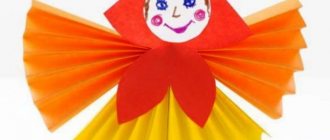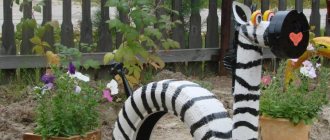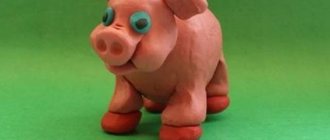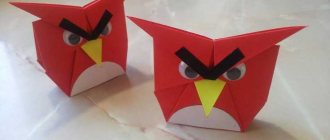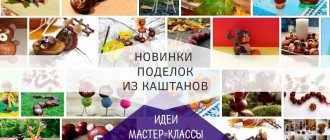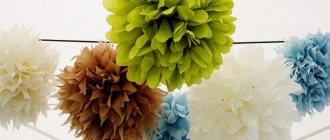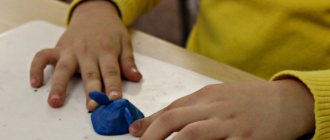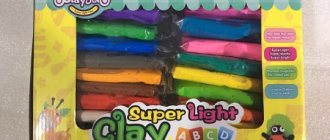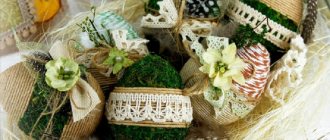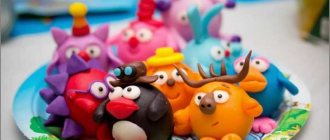Modeling ideas
Before teaching children to sculpt beautiful crafts from plasticine, you will have to acquire not only the main material, but also auxiliary ones - chestnuts, pine cones, seeds. They diversify the choice of characters for sculpting:
- Fauna - hedgehogs, hares and turtles are easy to make due to their miniature size and minimal colors.
- Flowers - colorful and simple figures, when properly combined, give rise to lovely compositions, and therefore they are sure to please young ladies.
- Festive objects and characters - Christmas trees, stars and snowmen are relevant at the most fabulous time of the year, because they only contribute to its atmosphere.
The corresponding list often includes different sweets, but they are sometimes perceived by children in the literal sense. Nobody wants the risk of eating plasticine. Therefore, it is better to start mastering sculpting with charming animals.
What you need for creativity
Good quality plasticine is one that does not stain your hands too much and does not stick to them. When you have such a set, you don't have to worry. The planned figures will turn out beautiful. “Hey Clay Zalipaki” was created just like that. Comes off easily from hands and furniture. Easy to apply and hardens the next day.
Creating crafts from plasticine on a topic that interests you will additionally require the following items: a pen (pencil) for rolling out thin parts, a knife for working on this material, a marker.
Cute hedgehog
Many fairy tales have been invented in honor of the prickly animal, but how can you see it on a children’s table if hundreds of needles grow on it? Everything is very simple:
- A small ball is molded from brown plasticine;
- The ball rolls out into a drop, which will serve as the body;
- Eyes and a nose are molded from white and black plasticine;
- 20-30 sunflower seeds are pierced into the back of a naked hedgehog.
The seeds should be inserted in rounded parts so that the points point upward. When the hedgehog is fully armed with sharp armor, it remains to be placed on cardboard or colored paper. This idea is relevant for other animals created from plasticine, which will be discussed further.
Floral panel
You can create a simple bouquet of roses on cardboard. The result is an original flower arrangement that can be used to decorate a postcard or panel.
For this you will need:
- multi-colored plasticine (can be plain - red, pink, yellow, white);
- stacks;
- cardboard (white and colored);
- polymer glue;
- scissors;
- pencil.
Progress:
- Cut blocks of multi-colored plasticine into small pieces;
- Make long sausages from each piece and flatten them with your hands or a rolling pin;
- We roll each resulting strip into a roll;
- We lay out the rolls in the form of a bouquet on previously prepared white cardboard for a postcard or panel, and adjust the composition;
Related article: Amigurumi. Crochet Mulatto doll
- We glue each “rose” with polymer glue (“Dragon” or another) or using a small soft piece of plasticine;
- We complement the composition with leaves made from “droplets” of green plasticine;
- Cut out a vase from colored cardboard and decorate it with a plasticine bow;
- We glue thick cardboard (for example, from a box) into the backing for the basket, as shown in the photo;
- Glue the basket, add leaves to hide part of the edge;
- We make a frame from colored cardboard (about 5-10 mm wide).
Ready!
To ensure that roses remain beautiful for a long time and do not deteriorate, it is best to sculpt them from colored polymer clay that hardens in air. Such bouquets will please the eye for a long time.
Master classes can be studied more clearly via video.
Romantic cat
Children love to purr, and when they hold a heart in their hands, then they can safely be recognized as the heroes of Valentine's Day. To make one such mustachioed and tailed romantic you will have to:
- Roll out one large, one medium and two small balls from blue plasticine;
- Form a slightly convex body-heart from a large ball, a drop-shaped tail from a medium one, and drop-shaped ears from small ones;
- Roll out several thin sausages from white plasticine and decorate the tail and body with them;
- Attach the tail to the left oval of the body, and the ears to the right;
- Mold eyes, nose and muzzle from white plasticine, and then stick them to the right oval of the blue heart;
- Form two eye corneas and a nose from green and black plasticine;
- Stick the corneas and nose to the white eyes and muzzle;
- Roll out four drops and one medium heart from blue and red plasticine;
- Stick blue drops to the body to simulate paws, and squeeze the red heart with the upper paws.
A child can make such a cat himself as a gift to his friend or girlfriend.
Modeling birds from plasticine
You can sculpt a beautiful and colorful parrot from plasticine.
Required colors:
- yellow;
- blue;
- orange;
- white.
If desired, you can use other available colors.
Step by step steps:
- Make an elongated three-dimensional circle from blue plasticine. This will be the torso.
- Roll a ball with yellow plasticine and attach it to the body. Flatten the ball, making the attachment point invisible.
- Make a flattened triangle with faintly defined corners from white plasticine and attach it to the place where the head and body are attached. Use a knife to make cuts similar to feathers.
- Use white plasticine to make eyes and insert pupils.
- Use yellow plasticine to make several small cones and stick them to the head and upper body at the same distance from each other.
- Make the legs and beak with orange plasticine.
- Make a diamond out of blue plasticine (this will be the tail) and attach it. When gluing, lightly press the upper part into the body with your hands, removing the attachment point. This way, this part of the tail will be glued in.
- Model the wings from blue plasticine and use a knife to make cuts in the form of feathers.
Good turtle
Before you take on the Teenage Mutant Ninja Turtles, you will need to make something simple out of plasticine for beginners. How about a good turtle? Its sculpting proceeds as follows:
- First, you need to roll out one large ball, four medium ones and one small one from green plasticine;
- Next, two balls are formed from brown plasticine - large and medium;
- The next step is to form a shell from a large brown ball (the figure should resemble a helmet or basin);
- The second brown middle ball is divided into many disks, which are superimposed on top of the shell;
- From one large ball of green balls a semicircular head is formed, from four medium ones - drop paws, from one small one - a tail;
- The head, paws and tail are attached to the shell;
- Using a stick, a match or a toothpick, patterns of a smile, nose and eye dents are drawn on the turtle’s face;
- The indentations of the eyes will be filled with disks of white plasticine, which in turn end with the pupils of black plasticine.
When the turtle is ready, it can be placed on blue or yellow colored paper, which imitate the sea and sand.
Fidget birds
“Angry Birds” is another thing that can be molded from light plasticine. Kids are crazy about these birds, and adults can use this temptation for their next modeling lesson.
Moreover, the thematic trio has light forms:
Note!
- Plasticine dinosaur: TOP-170 photos of creative DIY modeling solutions. Methods for making a dinosaur + simple master class
Plasticine machine: simple diagrams and non-standard ideas for crafts made from plasticine. Step-by-step instructions for making a machine with your own hands with photo reviews
How to make slime - the best ways to make slime at home. Simple and quick recipes with a step-by-step master class for children (150 photos)
- From blue and blue plasticine you need to roll out three large balls and six small ones;
- Small balls are compressed and adhere to large ones - two per large one (tufts are obtained);
- Eyes, eyelids and pupils are molded from white, red and black plasticine;
- Eyes, eyelids and pupils are attached to the body, and the finished eyes should convey the emotions of each bird individually;
- Three “sausages” are rolled out from red and dark blue plasticine;
- The sausages are compressed and attached to two different ends of each bird to give them beaks and tails.
The resulting trio can be placed opposite each other or around an object.
Features of the material
Air or light plasticine is a plastic modeling material that gradually hardens upon contact with air. It contains a polymer base, silicone, plasticizers, a binder and pigments. Immediately after removal from the capsule, the mass is easily shaped, kneaded, and stretched. The parts are easily glued together, the material does not crack or stick to your hands, and its surface does not need to be smoothed.
After contact with air, the mass hardens within 1 hour, and finally becomes solid within a day. Small parts begin to harden within 15-20 minutes. This circumstance requires quick modeling after removing the mass from the packaging. Pieces that have partially lost their elasticity can be softened by holding them in hot water for 10-15 minutes. Once completely hardened, the material cannot be returned to its previous state.
When working with air plasticine, the following nuances must be taken into account:
- The ornamental material is sold in sets with different numbers of colors, packaged in a polymer bag or jar according to shades. Color can be changed by mixing the contents of different packages. The remaining mass after use must be placed in a hermetically sealed container. After opening the package, the shelf life is 35-45 days.
- You need to sculpt quickly, but if the raw material is very soft, then when forming small parts you should wait a little time, constantly checking the consistency with your fingers.
- When connecting parts to each other, the mass must not be allowed to harden, so a small amount is prepared at a time. If there are problems with adhesion, the joint area is slightly moistened.
- Figures with complex relief are made by molding in templates.
While sculpting, keep your hands dry and clean. Dirt from the skin gets into the plasticine, which is especially noticeable on a light background.
You can create a variety of crafts from airy plasticine. Most brands do not tolerate moisture well, so finished products are stored away from water. The exception is some modern materials, which have water resistance (“floating mass”) indicated in their passport.
fruit tree
A figure for modeling is not necessarily a cartoon character. You can also make several trees from plasticine with your child. Moreover, they make a dense forest or garden.
But first, one rowan will be enough:
- You need to roll out a large ball of dark green plasticine;
- A wooden trunk is formed from brown plasticine;
- Dozens of lumps are separated from red plasticine and shaped into balls;
- Dozens of lumps are separated from light green plasticine and shaped into sausages;
- Sausages are attached to a large ball to imitate leaves, balls to imitate rowan berries;
- The ball is placed on a brown trunk.
Next to such a tree you can place all the animals and birds mentioned earlier.
Volumetric flower
Let's consider step by step how to make a model of a rose from plasticine in different ways.
From sausages and drops
You will need the following materials and tools:
- plasticine of any suitable color (white, pink, red, yellow);
- modeling board.
Progress:
- Knead a piece of plasticine, divide it into several parts;
- Roll a small piece into a ball and form a “droplet”;
- Make sausages from several pieces and flatten them to form a thin rectangular layer;
- Wrap the layer around the “droplet”, pressing and smoothing from below (the upper edge should remain free);
- Wrap the next “petal” around the other side of the base;
- Wrap with plasticine layers until the rose takes on a lush appearance (the edges still remain free in all layers).
It is important to remember that each row of petals must overlap the seams of the previous one, that is, the rows of petals must be distributed in a checkerboard pattern.
From identical balls
It is necessary to roll balls (5-7 pieces) of approximately the same size from plasticine.
The balls are then flattened into thin circles and laid out in a row, overlapping each other.
Next, fold the row, securing it from the bottom (the upper edges remain free).
It is necessary to fold it inwards, that is, so that each next petal rises slightly above the previous one, and the middle gradually sinks.
We fix and smooth the bottom, straighten the edges of the petals and get a rose.
Article on the topic: Topiaries made of corrugated paper: master class with photos
From droplets
They are performed according to the same principles as the two previous methods, but with some features. The resulting beautiful rose can be presented as a gift, supplemented with a stem and leaves.
So, you need:
- red or other colored plasticine;
- green plasticine;
- stacks;
- skewer;
- modeling board;
- hand wipes
Progress:
- Divide the red block of plasticine into approximately equal parts (7-8 pieces);
- Roll the balls and form them into “droplets”;
- Flatten the droplets thinly, maintaining their shape;
- We twist one petal into a tube and begin to wrap it with petals in a circle until we get a lush corolla;
- Cut five equal pieces from the green block;
- We roll them into cones and flatten them;
- We process the workpieces in a stack so that veins are formed;
- We put the leaves together, press and twist - we get a sepal;
- We wrap the skewer in green plasticine, thread the sepal through and prick the corolla, smooth it and melt it;
- We form blanks for leaves and process them with a stack;
- We attach the leaves to the stem, smooth them out, and add thorns.
Rose is ready!
For convenience, you can start the craft with a skewer (previously wrapped in green plasticine): the sharp end is wrapped with the first petal, and then the petals are glued in a circle.
Christmas tree
If the winter holidays are at stake, then green plasticine will come in handy for sculpting a Christmas tree. The corresponding process does not take much time:
- First, a large cone and a wide trunk are molded from green and brown plasticine;
- Next, the cone is placed on the barrel;
- The next step is to thin out the needle patterns from the very top to the bottom (for thinning, use the corner of a bank card or the edge of a coin);
- Small balls are rolled out from bright plasticine;
- Variegated toys are attached to the Christmas tree.
Note!
- Plasticine dog - TOP-180 photos of unusual ideas for creating crafts. Detailed master class on DIY modeling for children
- Clay products: basics of modeling, tips for beginners. Master class on making clay crafts + photo reviews
Animals made of plasticine - a master class on creating crafts with your own hands. Unusual modeling ideas + photo examples of finished works
Sometimes adults use scissors as a cutting tool. But the latter are unsafe, so before making a New Year's beauty from airy plasticine, it is better to get a coin or card.
Various crafts
What and how to sculpt ? It depends entirely on the child's imagination and level of skill.
I will show you pictures , videos and photos to motivate you and your kids to do what your little one can do and find interesting.
Figures
All your favorite characters can be molded from this plasticine and not just put on a shelf, but played with. Since they are durable, they do not stain your hands and do not deform after hardening.
View this post on Instagram
We tried air plasticine for the first time. I really liked it. It molds perfectly, holds its shape and sticks to each other, unlike playdoh. It dries up and turns into airy rubber. Very light. These are our first crafts made from it. It has a million uses: you can make casting molds from it, phone cases and full-fledged toys. Plasticine is very pleasant to the touch. It's nice to crush it in your hands. The child enjoyed playing with it, and mom and dad also had a lot of fun. I advise you to buy :) Advantages: Soft, silky to the touch. Beautiful colors. #what to do with a child #daynotes_play
Publication from Elena Selivanova (@daynotes.ru) June 25, 2021 at 7:04 PDT
We showed how we sculpt Kung Fu Panda using regular plasticine here.
Chips for games
Previously, we made chips from ordinary plasticine, but it sticks and loses its shape. But airy plasticine is perfect for making chips and cubes for purchased or homemade adventure games. We often sculpt the figures ourselves, because playing with ordinary cones is not interesting.
For the Minecraft adventure game, we made cubes - the heads of the characters.
For the game “Children's Corridor”, which is in the photo, we made mice and cheese from airy plasticine. By the way, a very interesting game, suitable for children of all ages and even adults. We made the field out of Legos.
Rules of the game in video from Igroveda
Food
You can make these cute cakes, donuts and ice cream yourself. Use them to decorate a child's room, make them as gifts, or use them as a refrigerator magnet.
Do you know how to make these simple cupcakes? When opening the plasticine, cut off a small corner of the bag and then, like from a pastry bag, you can decorate cakes and pastries by pressing on the bag with plasticine. A thin sausage will be squeezed out through the cut corner. By the way, by making such a small hole in the bags you protect the plasticine from drying out.
I’ll tell you a secret, or maybe not a secret: there are a lot of master classes on YouTube, look for “miniature food made from polymer clay.”
Several scans from a book on making tasty treats - enlarge by click.
Cases
In addition to funny toys, we create a very practical thing that will decorate our device and become an excellent gift for friends. You can decorate your case , or you can create your entire accessory from start to finish on a transparent silicone base.
The shape and idea of the cover itself and the appliqué on it may be different.
Great video!!! I really wanted this!))
Clothes for dolls
We prepare the dolls for winter - we make a warm dress, a hat and boots.
How to make a coat with a hood, mittens and boots for a doll.
Video - how to store, dry and remove clothes made from air plasticine:
Flowers
If you have good instructions, you can make from modest bouquets to more complex ones. Such flowers can decorate a mug, become part of jewelry, etc.
Badges
Look what cool badges you can make. If you glue them on a pin, you can decorate a backpack or jacket. If you use a magnet, you can make a superhero refrigerator. And this is literally in a matter of minutes! Even the smallest can do it.
Keychains
There are a huge number of ideas for keychains. These can be goodies, cakes, ice cream and chocolates. Or maybe cute little animals, flowers and hearts, etc.
School supplies decorations
Of course, this is not all! This material is perfect for making chips and cubes for adventure games, clothes for dolls, or handmade Lego sets will look very cool! Any figures, for example, your little one's handprint, a bouncing ball, food or dishes for dolls.
Elegant snowman
In old Russian cartoons, the snowman was completely white, carried a bucket on his head and looked through a carrot. Today the thematic hero has changed somewhat and these changes can be demonstrated when sculpting:
- From blue and white plasticine you need to roll out large and medium balls;
- A red or orange base will be needed to make six balls;
- From six balls you need to mold a pair of legs in the form of bags, a pair of mittens, a winter hat with a bell and a sausage scarf;
- The white middle ball rests on the large blue one;
- Sausage arms are rolled out of white plasticine;
- Each limb is attached to the body, a scarf is tied around the neck, a hat is placed on the head;
- All that remains is to make red buttons and carrots, as well as black eyes to decorate the snowman’s face with.
A smile is formed using a match or a stack. The finished snowman serves as a good companion for a decorated Christmas tree, as evidenced by hundreds of photos of plasticine crafts on a New Year's theme.
How to make figures and crafts from light plasticine step by step
Light plasticine is a mass that allows you to make any figures. Due to the fact that this material hardens in air, figurines made from it can be preserved and collected. The material is pleasant to the touch, stretches well and does not stain hands and clothes when used.
Before you make figures and crafts from light plasticine step by step, read the rules for using the material. It must be stored in airtight packaging. Try to work with parts quickly, especially if they are small. You can’t make a lot of blanks out of it and only then fasten them together, because the material hardens quickly.
It is better to fasten large figures with matches or toothpicks, after pre-treating the joints with water. We will get acquainted with the remaining rules of use in the process of making crafts.
Variegated bouquet of flowers
It’s too early for preschool children to pick flowers to give them as gifts. But they can mold them from different plasticines:
- Three sausages are rolled out from a green block, which will become stems;
- Roll out three thin sausages from blue, yellow and red;
- Multi-colored “worms” are twisted into spirals;
- Spirals are molded to the stems;
- Roll out two thin sausages from red and orange plasticine and then tie them together;
- The bouquet is tied with a red-orange ribbon, and it is recommended to keep a bow.
It is recommended to place such a colorful bouquet of plasticine for girls in a small vessel, which you can also create yourself from a brown, beige or white base.
How to make a craft from plasticine?
Everything is very simple! Try to create a simple figurine of a cat first. We will use ordinary domestic plasticine.
By following the step-by-step instructions, you will see how easy and fun it is:
- Initially, you need to decide on the color of the cat. Select a block of plasticine of the required color;
- to create the body of the cat, tear off and roll out a piece of plasticine of the required size, giving it an oval shape;
- make a smaller ball of the same color to form the head. Place it on your upper body;
- using four small balls, roll out sausages to make paws! Place them on the cat's lower body;
- make two small pink triangles and attach them to the head. As you guessed, these will be ears;
- Next, roll out the plasticine sausage to create a tail. You can make it any length and shape you want;
- two tiny balls will make wonderful eyes, and a larger ball will make a cat’s nose;
- and finally, you can decorate your cat with multi-colored stripes on the back. Meow! The kitty is ready!
This is, of course, the simplest thing you can create from plasticine in a few minutes. To sculpt more complex figures, you may need to take a special master class. All this, of course, will depend on your desires in creativity. Beauty has no boundaries!
Crafts from glue: 150 best ways to use glue to create crafts + simple diagrams and photos of finished works- DIY crafts from matches: step-by-step master classes and DIY craft ideas + simple and quick photo diagrams
- Crafts from tubes - unusual ideas, step-by-step master classes for beginners + photo reviews of ready-made DIY crafts
Racing car
All boys like cars. Plasticine is a good basis for making appropriate cartoon vehicles.
Note!
Plasticine crafts for grade 4 - reviews of creative ideas. New products, step-by-step master classes for schoolchildren + 150 photo examples
- Salt dough recipe: TOP 100 photos with simple modeling dough recipes. Ideas for DIY salt dough crafts with examples of finished work
Plasticine tank: step-by-step modeling instructions with simple work patterns. Master class for children on creating a tank with their own hands + photo reviews
- From red plasticine you need to separate two pieces for the body - large and medium;
- Both parts are formed in a trapezoid, after which the middle shape is superimposed on the larger one;
- On the upper trapezoid, the contours of the glazing are outlined with a match or a stack;
- The lower shape outlines semi-oval curves for the wheels and smile radiator;
- Tires and wheels are formed from black and red plasticine, after which the wheels are stuck to the curves;
- White plasticine is used to form sheets for eye-windows and a smile-radiator;
- The window eyes are complemented by black pupils sculpted from a matching base;
The finished car can be decorated at the back with a plasticine red bumper. There are pictures of ready-made plasticine options on the Internet. After getting to know them, the kids want to make cars of different colors.
Useful tips
For sculpting, it is better to use blunt and harmless objects. Even a match must be cleared of sulfur.
In order for the child to show interest in modeling, on the eve of the thematic event, it is recommended that he be shown a cartoon with the characters and objects that will be involved.
Good plasticine is plasticine with a safe composition. The products “Luch”, “ArtBerry” and “Kribly Boo” meet this requirement. In general, high-quality plasticine should not emit a strong or sweet odor. After all, such products are most likely toxic and will be perceived by the child as sweetness.
Each plasticine has a certain expiration date. Therefore, when choosing it, you need to pay attention to both the corresponding indicator and the date of manufacture. The packaging must also indicate age restrictions and a barcode.
The more plasticine bars in the package, the better - the child really wants to create masterpieces. First, it is better to purchase a package with at least five or six multi-colored bars.
A little plasticine history
Plasticine as we know it today was invented in England more than a hundred years ago by art teacher William Harbutt. He was looking for a model material that was easy to use, and the final product was the result of much experimentation.
The adult artists, as well as William's six children, fell in love with "the clay that never dries." The new material inspired the children so much that after a while the house was filled with plasticine castles and fortresses, models of boats and ships, various figures of animals and people, and entire fragments of battles.
William initially intended his invention as a teaching tool, but when he saw how excited his family was about the clay, he decided to start selling it so that other children could enjoy it too. The whole family helped come up with a name for the new material - plasticine.
Since then, millions of packages of plasticine have been used by artists, architects, engineers and, of course, children all over the world.
Almost everything is created using plasticine - from models of buildings and cars to models of space suits, from aircraft design to copies of sculptures. But the main use of plasticine is, of course, children's DIY plasticine crafts.
